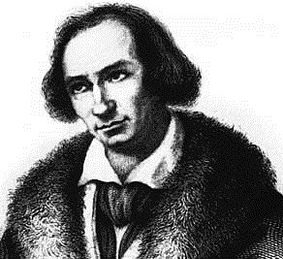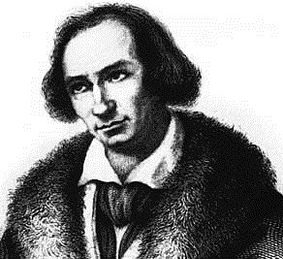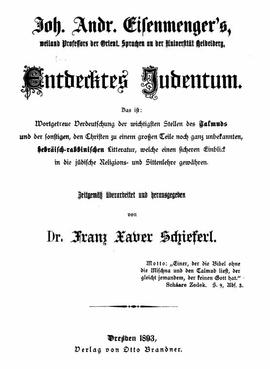Justifying a view of Muslims as essentially untrustworthy and potentially violent by quoting the Koran has an interesting historical analog.

In 1700 Johann Andreas Eisenmenger collated and published a comprehensive account of the reasons Jews posed a threat to Christian society. Translated, the title was Judaism Unmasked. The Jewish religious texts, Eisenmenger warned, were the evidence that the Jews hated and sought the harm of non-Jews. He brushed aside contemporary Jewish intellectuals who interpreted their own writings more in accord with modern values and went straight to the sources themselves.
. . . casting aside the interpretations accepted by his contemporary Jews in his quest to reconstruct the world of Judaism by studying the sources themselves.
From a range of Jewish texts he set out
to prove the worthlessness of the Talmud to which the Jews attribute religious authority close to that of the Bible. Five chapters are devoted to Jewish beliefs regarding the Messiah and to eschatology and resurrection. All this is intended to prove that the Jews are ingrained with superstitions and illusionary conceptions.
However, Eisenmenger attacks Judaism principally for its attitude toward other religions and their adherents. The point of this attack is to show that the Jews are commanded by their religion to abuse that which is sacred to all other religions, and above all that which is sacred to Christianity. The Jewish tradition prohibits robbery, deceit, and even murder only in relations between Jews, while the property and even the life of the Christian are as good as outlawed. If that is the tenor of the tradition into which Jews are initiated from childhood, one should not be surprised by their actual behavior should they be found abusing articles of Christian worship, that is, desecrating the host, or be caught in deceit, robbery, or even murder. (Katz, 17-18)
He supported his belief with Jewish texts saying that the Jews were commanded by their religion to commit the very crimes he accused them of.
Eisenmenger . . . wanted to demonstrate that everything derogatory or discriminatory that appeared in the Jewish tradition regarding any people whatsoever was seen by the Jew as applicable to his Christian contemporaries. The Christians are identified with the minim of whom it had been said, “Lowering down, but not raising up”; with Amalek, whose memory the Jews are commanded to blot out; and even with the seven nations whom the conquerors of Biblical Canaan were commanded to destroy. In the future, in the Messianic age, the commandment of destruction would apply to all mankind save the Jews. As the Jews awaited their redeemer every day, it stood to reason that they would carry out the commandment of destruction even in the present on those whom it was within their reach to injure and harm.
Eisenmenger’s point of departure was the belief that the Jews were habitually robbing and murdering their Christian neighbors. He believed the tales of ritual murder, of the desecration of the host and the like, regardless of whether they stemmed from folklore or from medieval chroniclers who failed to distinguish between fact and fancy. He supported his belief with Jewish texts saying that the Jews were commanded by their religion to commit the very crimes he accused them of. In his attempt to make this point, Eisenmenger drives his interpretation to the height of absurdity. In every case where he found such expressions as “deserves death” . . . he explained them as requiring a death penalty to be imposed by human hands. . . . Jewish scholars would also interpret metaphors and figures of speech literally whenever the conclusions to be drawn from such interpretations corresponded to their views. . . . To anyone who is knowledgeable in traditional Jewish literature, Eisenmenger’s interpretations read like a parody of both the legal and homiletic literature. . . . . [F]or the reader who is unfamiliar with that literature: he may fall for Eisenmenger’s conclusions, not knowing that they are no more than the very assumptions that preceded the writer’s examination of the material. He may accept the image of the Jews as a community of superstitious fools, hostile to those around them and despising whatever is holy to their neighbors. Completely unscrupulous in their behavior toward the stranger outside their community, therefore they cheat and wrong those who have business contacts with them, and this they do by command of their religion. If they are brought to court, their oaths are not to be trusted because they regard lying under oath of little consequence when their fellow litigant is a non-Jew. Their loyalty to the state is no more than lip service; and, in fact, they violate the law with impunity and are willing to betray their king and serve his enemies as spies and secret agents. The Jew cannot even be trusted in matters of life and death, and Christians who take treatment from a Jewish doctor endanger their lives. Eisenmenger fully believed the reports, in Christian chronicles and folk tales alike, that many a child had died at Jewish hands in order to satisfy ritual needs. Eisenmenger tried to gain the reader’s confidence by quoting chapter and verse demonstrating that the absolutely unethical behavior of the Jew derived from that decadent source of his religion, the Talmud and Rabbinical literature. (19-20)
According to […], Islam does not develop, and neither do Muslims; they merely are. . . .
Edward Said, see How anti-Muslim hostility has replaced the old anti-Semitism
Jewish history was also conceived as a single historical unit both by Jewish tradition and by Christianity, the latter, of course, regarding the appearance of Jesus as a decisive turning point. However, while the traditional concept, Jewish or Christian, was that the unity derived from a divine mission, Voltaire explained it in terms of permanent qualities deeply rooted in the spirit and character of the people. Evidence of these characteristics could be taken from any period in the history of the people: after all, periodization is essentially an external matter, and time creates no barriers between generations. Consequently, Voltaire’s method allowed him to transfer his data from one period to the next and to attribute the basic characteristics of the Biblical people to later generations. Likewise, it is hardly surprising to find the converse: qualities discovered in later periods are attributed to Biblical Jews. That Jews are drawn to money and that they deal in business transactions and usury could be postulated in the light of their occupation in the Middle Ages and modern times, and Voltaire projects this stereotype back to the Biblical age. For example, the Bible does not indicate explicitly any desire on the part of the Jewish people to rule over other nations, but in the Talmudic and medieval periods deluding images of the Messianic era did arise. These were the basis for the Christian polemic contending that the Jews sought world domination. Ex post facto, polemicists found supporting material for this view in the Bible as well; Voltaire accepted their Christian accusations and incorporated them in his rationalistic indictment. (42-43)
Katz describes a list of other prominent names through history who followed the arguments and methods of Eisenmenger and Voltaire, too many to cover here in any sort of detail. The point is clear:
The reference to the Talmudic sources, usually based on Rohling’s Talmudjude, became a steady feature of anti-Semitic propaganda.
Or if not the Talmud, it was the Old Testament that rang out the warning:
Duhring, on the other hand, held, as we have seen, the Old Testament’s teaching responsible for Jewish immorality and regarded the “recent citation of Talmudic instances” to be superfluous. (267)
One dramatic scene . . .
In a gathering of some five hundred participants in April 1882, a speaker named Franz Holubek declared that “The Jews have not shown themselves worthy of emancipation . . . The Jew is no longer a co-citizen. He made himself our master, our oppressor . . . Do you know what gives these people the right to put their foot on our neck? The Talmud, in which you Christians are called dogs, donkeys, and pigs.’’ This invective provoked an uproar in the audience, causing the police to dissolve the meeting. Holubek was indicted for interreligious incitement but in the ensuing trial, defended by Pattai, he was found innocent. The line of defense was that the alleged invective conformed to scholarly established truth as stated in the learned treatise The Talmudjude, by August Rohling, professor of Hebrew literature at Charles University in Prague. (285)
Katz, Jacob. 1982. From Prejudice to Destruction: Anti-Semitism, 1700–1933. Cambridge, Mass.: Harvard University Press.


